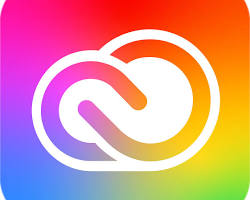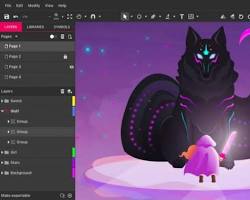The world of graphics is rich with various graphic packages used mainly for creating different types of advertisements. These packages come with unique features that set them apart from one another. They are categorized based on their functions and the tasks they perform. The choice of graphic packages depends on the specific work requirements, and the order and combination of packages used can vary.
Graphic packages can be used for a range of purposes, including corporate advertising, cartoon animations, web-based advertisements, and poster designs. These applications represent the basic functional groups of graphic packages, each with specialized software to ensure effective performance. This article will discuss the top seven graphic packages for designers and businesses.
What are Graphic Packages
A graphic package is a type of software used to create and edit images on a computer. These programs are usually designed for specific types of artwork, but many can be used for various graphic design tasks.
Graphic packages help users produce and manipulate visual content, ranging from sophisticated tools for professionals to simpler, more intuitive options for beginners. With these tools, you can design anything from logos and brochures to websites and social media graphics.
Types of Graphics Packages
Graphic packages for commercial use differ significantly from those designed for artistic purposes. Some graphic software is vector-based, while others are bitmap-based.
Vector-based packages are preferred for commercial use because they produce clean visuals that can be resized without losing quality. The two main types of graphic packages are;
1. Raster Graphics Editors (or Bitmap Editors): These work with images made up of pixels (tiny dots of color). They are ideal for editing photographs and creating complex artwork with gradients, textures, and subtle color variations. Examples include Adobe Photoshop, GIMP, and Krita.
2. Vector Graphics Editors: These create images using mathematical formulas to define lines, shapes, and curves. They are perfect for logos, illustrations, and designs that need to be scaled up or down without losing quality. Examples include Adobe Illustrator, Inkscape, and CorelDRAW.
Top 7 Graphic Packages for Designers and Businesses
Here are 7 top graphic packages for designers and businesses, catering to both beginners and professionals:
1. Adobe Creative Cloud: Adobe Creative Cloud is the industry standard for graphic design. It includes Photoshop for editing photos, Illustrator for creating logos and illustrations, InDesign for designing layouts, and XD for designing websites and apps.
The software is powerful and produces industry-standard files, and the different programs work well together. However, it is expensive to subscribe to and can be difficult for beginners to learn. It is best suited for professional designers and businesses that need the most complete design tools available.
2. CorelDRAW Graphics Suite: Versatile and User-Friendly: CorelDRAW Graphics Suite is a powerful and versatile graphic design software known for its ease of use. It excels in vector editing and includes photo-PAINT for image editing, making it great for vector illustrations and page layouts. CorelDRAW offers robust vector tools, extensive font management, and good value for the price.
However, it has a less intuitive interface and a smaller user base compared to Adobe. This suite is ideal for illustrators and graphic designers who need advanced vector editing capabilities.
3. Sketch: Focused on UI/UX design, Sketch is a vector-based tool perfect for creating website and app interfaces. It’s popular among UI/UX designers because of its streamlined and efficient platform. Sketch allows you to reuse design elements for consistency and create interactive prototypes directly in the app.
It has an intuitive interface, strong vector editing capabilities, and is excellent for collaboration. However, it’s only available for Mac and isn’t suitable for print design. This tool is ideal for UI/UX designers and web developers.
4. Gravit Designer: Gravit Designer is a design app that can be used on the web or downloaded to your computer. It’s great for making logos, icons, illustrations, and simple website or app designs. It’s free to use and works on any operating system.
The app is easy to use and has a modern look, but it doesn’t have as many features as some other design programs. It also requires you to save your work online. Gravit Designer is best for people new to design or those who need a simple tool for small projects.
5. Inkscape: Inkscape is a free design program for making illustrations, logos, and diagrams. You can download it and use it on any computer. It has lots of powerful tools but can be a little hard to learn at first, and it doesn’t look as modern as some other design programs.
It’s a great option for designers on a budget or those who don’t want to pay for expensive software.
6. Affinity Suite: Affinity is a great alternative to Adobe software. It has similar programs for editing photos, creating illustrations, and designing layouts, but you only have to pay for it once. It’s also affordable, easy to use, and runs smoothly.
The only downside is that it’s not as popular as Adobe, so there aren’t as many people using it or creating extra tools for it. If you’re looking for an easy-to-use and affordable design software, Affinity is a good option.
7. Canva: Canva is a website that provides a huge collection of templates to help you create social media posts, presentations, and more. It’s easy to use, even if you don’t have design experience, and it has a free option.
However, it doesn’t give you as much freedom to create unique designs and might not be the best choice for more complicated projects. Canva is perfect for individuals and small businesses who need to quickly make simple designs.
Uses of Graphic Packages
Graphic packages enable you to handle all aspects of creating and designing directly from your computer without moving from your seat.
In industries, businesses, government, and educational organizations, graphic packages are often used to create 2D and 3D graphics of mathematical, physical, and economic data in the form of histograms, bar charts, and pie charts. These graphics and charts are very useful for decision-making.
Other Uses:
- You can design letterheads, birthday cards, invitation cards, wedding cards, business cards, and banners.
- Graphic packages allow artists to create various types of digital art, including paintings and drawings.
- They are used to manipulate images on a computer.
- They help create, edit, display, and print graphic images.
Graphic packages are essential tools for designers and businesses alike. Whether you’re looking to create stunning visuals, streamline your workflow, or produce professional marketing materials, there’s a graphic package out there for you. By understanding the strengths and weaknesses of each option, you can make an informed decision that will enhance your design projects and support your business goals.
READ ALSO: 5 Essential Strategies for Success in Sales & Marketing






